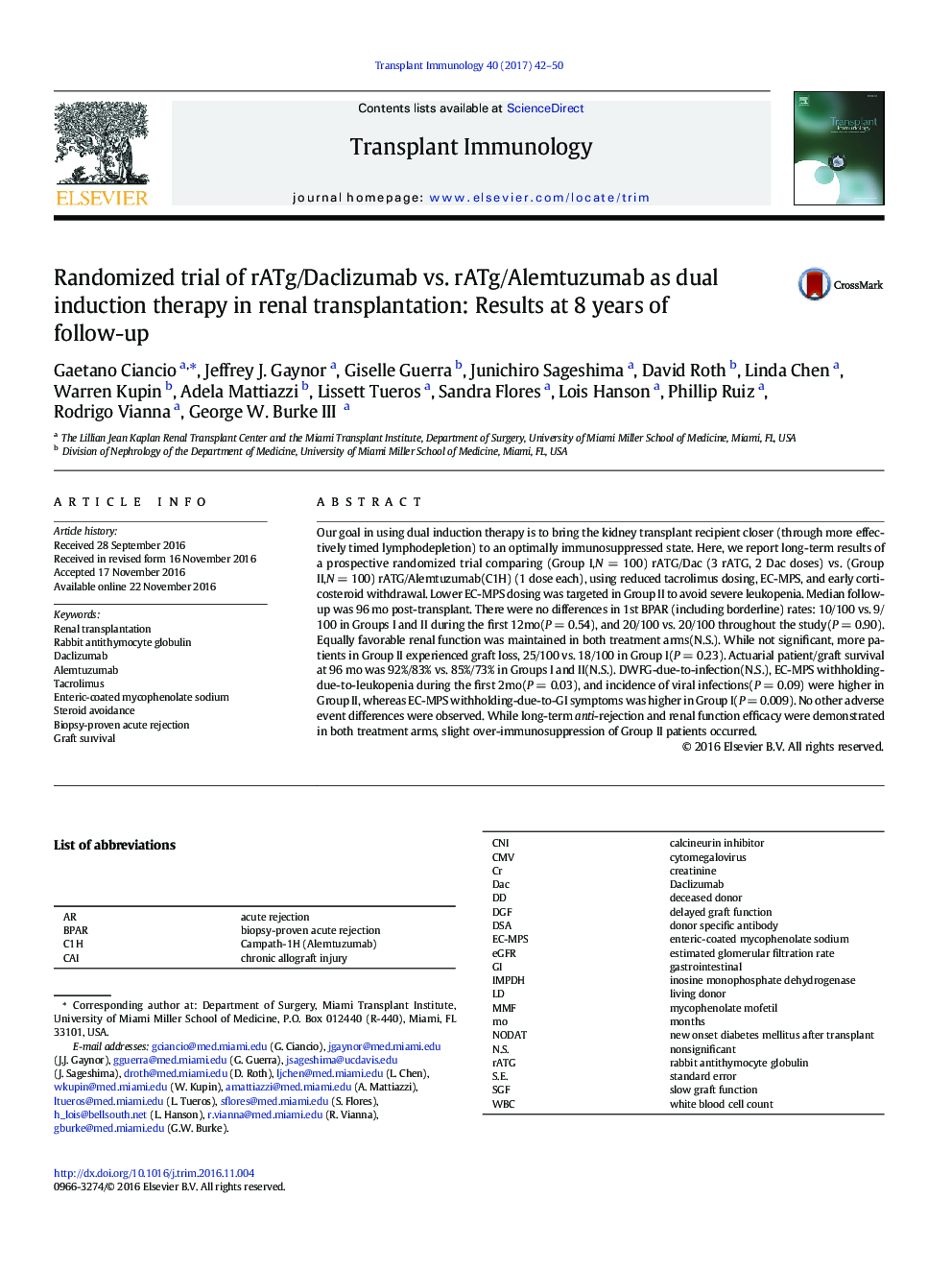| Article ID | Journal | Published Year | Pages | File Type |
|---|---|---|---|---|
| 5670483 | Transplant Immunology | 2017 | 9 Pages |
Our goal in using dual induction therapy is to bring the kidney transplant recipient closer (through more effectively timed lymphodepletion) to an optimally immunosuppressed state. Here, we report long-term results of a prospective randomized trial comparing (Group I,NÂ =Â 100) rATG/Dac (3 rATG, 2 Dac doses) vs. (Group II,NÂ =Â 100) rATG/Alemtuzumab(C1H) (1 dose each), using reduced tacrolimus dosing, EC-MPS, and early corticosteroid withdrawal. Lower EC-MPS dosing was targeted in Group II to avoid severe leukopenia. Median follow-up was 96Â mo post-transplant. There were no differences in 1st BPAR (including borderline) rates: 10/100 vs. 9/100 in Groups I and II during the first 12mo(PÂ =Â 0.54), and 20/100 vs. 20/100 throughout the study(PÂ =Â 0.90). Equally favorable renal function was maintained in both treatment arms(N.S.). While not significant, more patients in Group II experienced graft loss, 25/100 vs. 18/100 in Group I(PÂ =Â 0.23). Actuarial patient/graft survival at 96Â mo was 92%/83% vs. 85%/73% in Groups I and II(N.S.). DWFG-due-to-infection(N.S.), EC-MPS withholding-due-to-leukopenia during the first 2mo(PÂ =Â 0.03), and incidence of viral infections(PÂ =Â 0.09) were higher in Group II, whereas EC-MPS withholding-due-to-GI symptoms was higher in Group I(PÂ =Â 0.009). No other adverse event differences were observed. While long-term anti-rejection and renal function efficacy were demonstrated in both treatment arms, slight over-immunosuppression of Group II patients occurred.
